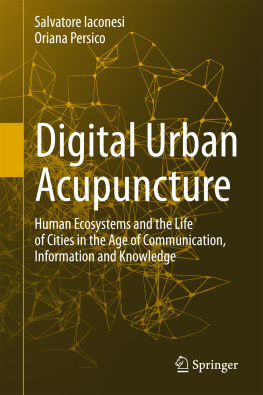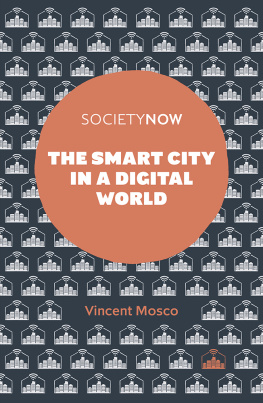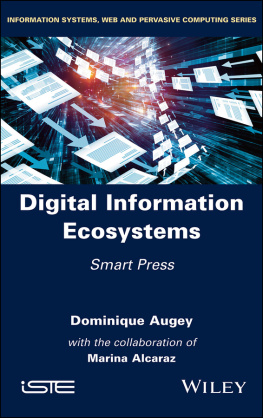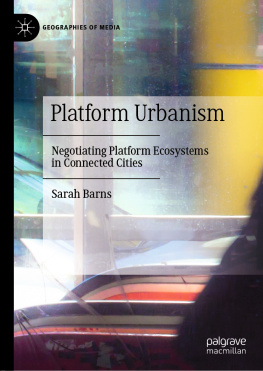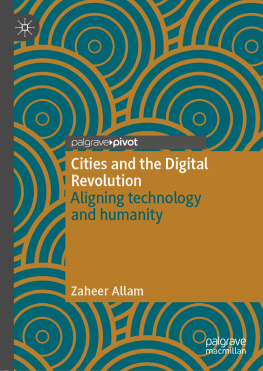1. Introduction
This book represents a reflection on the current state of the research process which has led us through 4 years of explorations of the transforming landscapes of information, knowledge, communication, and relation in cities worldwide.
In these few years, things have radically changed.
Things that were impossible became possible. Practices that seemed strange, or even weird, became normal. Processes whose results appeared to be unlikely became likely, so much that now we are using them as our main inspiration about what the future of our cities could be.
This transformation has not been conflict-free.
Job markets have changed. People have protested. Relationships have assumed new forms. Power architectures have evolved. Distributions of wealth, health, well-being, happiness, and access to opportunities have changed, not always for the better.
There have been migrations, revolts, crimes, and unethical behaviors.
Most of the time, all of this change found its direct or indirect origin in the massive amount of data, information, and knowledge which has become available and accessible to multiple types of subjectscitizens, designers, entrepreneurs, public administrators, activists, artists, secret services, and morethrough the wide presence of ubiquitous technologies.
Our cities have become filled with technologies, so much that any gesture, motion, traversal, and action of our daily lives generate data and information and can be used to generate knowledge and wisdom. Whether it is by flipping on a light switch; purchasing a tomato at the supermarket; having fun at a bar with a Wi-fi connection; cooking in our technological kitchen; working at our office while interacting with our friends and relatives online; driving our car; or just, simply, walking, in our cities full of sensors, cameras, devices, antennas, network connected objects and infrastructures, and other technologies: each of these actions generate data.
Whether we realize it or not, whether consciously or unconsciously, whether we are on social networks or not, and whether we possess some smart object in our pocket or in our home or not, we constantly generate data and information, in direct and indirect ways.
These data can be used for multiple purposes: to sell us consumer products through targeted advertising; to find patterns for fighting terrorism; to make new scientific discoveries which could create better scenarios for health, pollution, energy consumption, food production and usage, public transport, safety, development, and more.
Patterns (or their absence) can be found in data and information, generating knowledge. Patterns can be found in knowledge, generating wisdom.
In this book, we will focus on one thing which can be done with all of these data and information: understanding its flowsand the resulting flows of knowledge, wisdom, emotion, and, in general, communicationin cities, allowing us to gain insights about how to make interventions in it, creating a better, more inclusive, participatory, collaborative place.
We call this process Digital Urban Acupuncture (DUA), and through the years, we have developed a methodology for it, which can be useful for researchers, citizens, public administrators, urban planners, activists, entrepreneurs, designers, and artists.
In DUA, we take into consideration technologically rich environments (mainly cities, although rural environments are progressively becoming rich in ubiquitous technologies, so much that there are wonderful perspectives in applying DUA in these spaces), and we observe them through their attitude of spontaneously generating digital data and information under many forms: social networks; sensor networks; applications and services; real-time or off-line datasets; or through more creative ways which can include urban installations or interventions, citizen activation processes, gamification techniques, and more, as we will see throughout the book. In this process, we harvest large amounts of data and information, which we analyze using multiple techniques and combining multiple disciplines, from computational sociology, to digital ethnography, to network theories (e.g., ActorNetwork Theory (ANT)).
Through this observation process, we aim at describing what we have defined the Relational Ecosystem: the descriptions and models according to which data, information, knowledge, and wisdom flow across (and through) the subjects of the city, whether they are individual citizens, organizations, companies, groups, tribes, administrations, or else.
The Relational Ecosystem of the city can be seen as a landscape, superimposed on the physical landscape of the city, but with different behaviors: Its time frames are different and nonlinear; it moves, in fluid ways; it interconnects (and separates) regardless of the physical proximity; it is emergent, generative, and spontaneous, like an ubiquitous garden made of spontaneous vegetation which, instead of being carried on by winds, animals, and human beings, gets spread through digital networks, Wi-fi signals, mobile networks, interactions, transactions, and more.
The Relational Ecosystem can be interpreted by integrating the contributions coming from a range of other disciplines, such as anthropology, sociology, statistics, architecture, and arts and design.
By gaining insights about the Relational Ecosystem, citiesor parts of them, maybe in specific times or contextscan be described as organisms, their functioning and behavior closely relatedand, in some cases, determinedby these flows. Just as, to an extent, the life of a human body can be described in terms of the flows of blood, food, air, lymph, and electricity, exchanging substances, information, resources, stimuli, feedbacks, and more, between nodes as tiny as cells, as large as organs, and as diffused as the immune system.
This vision of the city as a complex system of flows gives rise to the possibility to try and interpret them and their interruptions, obstructions, blockages, interferences, deviations, jams, and dispersions, using techniques as varied as the ones derived from data and network sciences and the ones related to anthropology, psychology, and communication sciences. Through these understandings, it is possible to plan, design, and conduct interventions whose aim is to re-establish certain flows, to create new ones or to constitute the possibility for the emergence of novel ones in different, often unexpected, ways.
This process is the one we define as DUA: understanding the flows in the Relational Ecosystem of the city to design interventions to influence them; using design, architecture, policy-making, planning, restoration, and recontextualization processes for spaces and places, education processes, artistic intervention, and more; and also providing citizens with the tools and methodologies which can be used to design their own interventions.
Through DUA, this process can be done in informed, active, inclusive, participatory ways, producing positive interactions and also confronting with the value which is represented by the existence of differences, of conflicts, of transgressions, and of the social, spatial, political, and psychological configurations which they dynamically imply, through their presence, absence, fuzziness, preciseness, persistence, and volatility.

